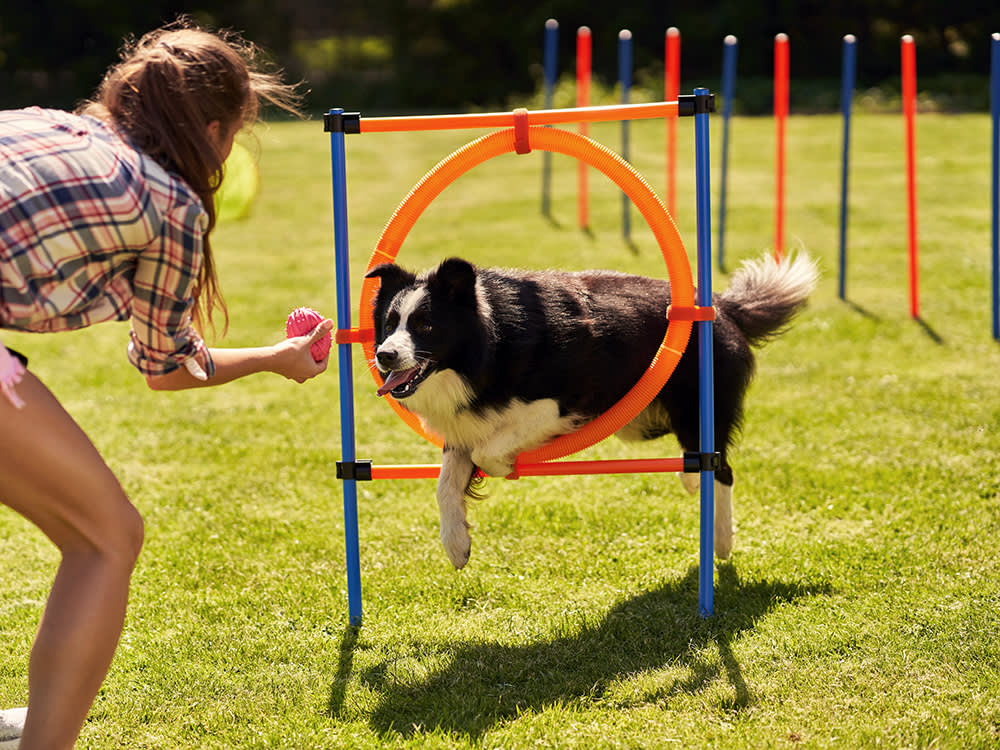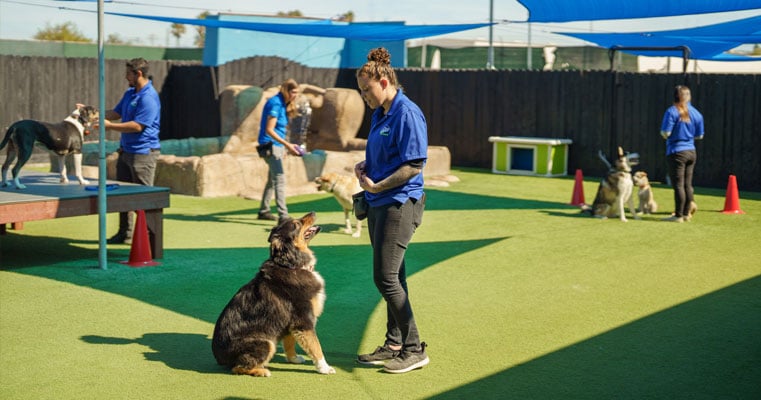Essential Tips for Successful Dog Training: A Guide for Family Pet Owners
Effective pet training is a diverse process that calls for a tactical approach customized to both the animal's personality and the owner's purposes. Comprehending how to browse these obstacles can dramatically improve the training experience, inevitably transforming the partnership between proprietor and canine.
Recognizing Dog Actions
Understanding pet dog behavior is necessary for effective training and promoting an unified connection in between canines and their owners. Pets communicate largely through body movement, articulations, and actions, making it critical for owners to analyze these signals accurately. Acknowledging a pet dog's position, tail placement, and ear alignment can supply understandings into its emotion. As an example, a wagging tail does not always indicate happiness; it can additionally signify excitement or stress and anxiety.

Socialization plays a significant role in dog actions; direct exposure to different atmospheres, people, and other pets can dramatically influence a pet dog's character. Additionally, factors such as type features and private character ought to direct training methods, as some types might have particular behavioral attributes that require tailored approaches. By understanding these components, proprietors can develop a helpful environment that encourages positive actions, causing effective training end results and a much deeper bond with their pet dogs.
Developing Consistent Commands
Effective communication with your pet dog begins with developing constant commands. This fundamental aspect of training is vital for cultivating understanding in between you and your animal. Uniformity in the commands you make use of makes sure that your pet can dependably associate particular words or phrases with the desired habits.
When picking commands, select clear, distinct words that are very easy to differentiate and state from one an additional. Avoid utilizing similar-sounding commands that might confuse your canine. Utilizing "rest" and "remain" is appropriate, however "rest" and "struck" can lead to misunderstandings.
Additionally, preserve the exact same tone and quantity for each and every command. Dogs are delicate to singing cues, so differing your tone can create confusion.
It is just as vital to ensure that all member of the family are on the same web page relating to the commands utilized. A united front in command usage will certainly stop mixed signals and reinforce the understanding procedure.
Positive Support Methods
The power of positive support in canine training lies in its capacity to motivate desired actions via benefits and appreciation. This method is grounded in the concept that behaviors adhered to by positive outcomes are most likely to be duplicated. By including positive support into your training routine, you can efficiently form your pet dog's actions in a useful manner.
To carry out positive support, it's vital to recognize what inspires your dog, whether it be deals with, toys, or spoken praise. When your pet dog carries out a wanted action, such as resting on command, instantly compensate them with a treat or love. This association between the command and the positive end result enhances their understanding.
It's essential to timing the incentives appropriately; delivering the support within seconds of the preferred habits helps your pet dog make the link (dog training). Additionally, consistency is vital-- guarantee that all relative utilize the exact same commands and incentive systems to avoid complication

Slowly, you can lower the frequency of treats as your canine finds out the actions, transitioning to applaud or periodic incentives. This approach not only fosters a strong bond between you and your canine yet additionally advertises a positive knowing atmosphere, making educating an enjoyable experience for both.
Socialization and Interaction
Constantly revealing your dog to a variety of environments, people, and other animals is essential for their social advancement. Socialization ought to begin early, ideally during the crucial window of 3 to 14 weeks, when puppies are most receptive to new experiences. Older pet dogs can likewise benefit from ongoing socialization initiatives.
Present your pet to various settings, such as parks, pet-friendly stores, and urban locations. This direct exposure assists them adapt to various stimulations, reducing anxiousness and concern actions. Motivate positive communications with various other canines and people, ensuring that these experiences are secure and controlled to promote confidence.
Make use of structured playdates with well-mannered pet dogs, as this can about his enhance your pet's social skills and teach them suitable behavior. Obedience classes and training sessions likewise offer outstanding chances for socializing, enabling your pet to communicate with others in a monitored atmosphere.
Display your canine's body movement during interactions, as this will certainly help you assess their comfort level. Progressively enhance direct exposure to more difficult scenarios while guaranteeing that each experience is favorable. A well-socialized dog is a lot more most likely to exhibit balanced actions, making them a joy to have in any type of setup.
Addressing Common Training Difficulties
Every pet proprietor will certainly encounter training difficulties eventually, despite their dog's age or socialization level. Recognizing usual issues such as stubbornness, diversions, and terror can aid in developing effective methods for renovation.

Slowly introduce disturbances as the pet dog becomes much more skillful in commands. Short, constant training sessions are likewise efficient in preserving interest.
Fearfulness can prevent a dog's discovering process. Gradual desensitization to the source of anxiety, coupled with favorable reinforcement, can aid relieve anxiousness. Persistence is important; never compel a pet dog into a scenario that triggers distress, as this may aggravate the problem.
Ultimately, understanding and addressing these common obstacles with an organized method will certainly promote a more efficient training experience, strengthening the bond in between canine and proprietor while promoting effective discovering.
Conclusion
In recap, successful dog training relies upon an extensive understanding of canine actions, the establishment of regular commands, and the application of positive support techniques. Socializing plays an essential duty in developing well-adjusted pet dogs, while dealing with typical training challenges needs perseverance and adaptability. By applying these important methods, pet owners can cultivate a strong bond with their pet dogs and advertise desirable habits, inevitably leading to a harmonious partnership between humans and their canine buddies.
Recognizing canine habits is crucial for effective training and promoting an unified partnership in between canines and their owners.Socialization plays a substantial role in canine habits; direct exposure to various settings, individuals, and other animals can substantially influence a dog's character.The power of positive support in pet dog training exists in its capacity to urge desired behaviors through rewards and appreciation. By including favorable support right into your training routine, you can effectively shape your canine's behavior in a constructive manner.
In summary, successful over here canine training relies on an extensive understanding of canine habits, the establishment of consistent commands, and the application of favorable reinforcement techniques.